#bill haskell
Note
Another thing that seriously bothers me abt the show is that they’ve also cast per haskell for season two and that annoys me bc so much of the reason that kaz’s character and kanej were as butchered as they were in the show was to work around the implications of making kaz leader, and the fact that they decided to add per haskell in anyway just shows that they could have done that before and that they completely changed their characters for literally no reason. I think maybe the article mentioned that per haskell might be in a flashback, so they’re going to have kaz take over the gang before even the events of the ‘prequel’ (which like, makes his character so much less compelling honestly), but like, if they’re going to fit so much backstory in anyway they honestly could have put the whole per haskell thing in the present timeline in the show
Yeah there was 0 reason for us to see Pekka Rollins but not Per Haskell. My theory is that Kaz is a very tiny gang leader right now (.... in fact I don't remember the Crows being referred to as a gang except by Freddie in an interview. Jesper calls him "boss" but that could be in a job sense) so he chooses to join the Dregs to get more credibility. Idk man. They messed up.
#sab salt party#eernask#eernanon#eernask talk sab#kaz being inej's boss and the one in charge of paying off her slavery bills my beloathed#genuinely don't understand why they would change that i don't#it added nothing he didnt have to be the leader he could have been the owner of the club per haskell could have been offscreen
20 notes
·
View notes
Text

(43 + 117)
#joe haskell's story? it's exactly the same as bill malloy's story just one chapter/thirty years behind.#/ all potc sleeper agent jokes aside;#(and it does make me a little unhinged every time someone says ' a fine man ' or variant; it's only ever been said about them so far.)#perhaps i am implying that doing liz's bidding was a mistake. for both of them. at least it only cost joe his relationship;#he. unlike bill. gets to leave widows hill at the end of the day.#history sure likes to rhyme at collinwood; in collinsport.#dark shadows#bill malloy#joe haskell#carolyn stoddard#burke devlin#polkaknox edits
3 notes
·
View notes
Text
tag drop.
#boy time#➤ re: joe haskell. ┊ on two wheels in the land of vampires.#➤ re: chris jennings. ┊ the wolfsong is the sound of the rending you will suffer,in itself a murdering.#➤ re: bill malloy. ┊ just the water. it pays us,and then it claims us,swallows us whole.#➤ re: quentin collins. ┊ merely a man of larger expectations than life has hitherto offered me.#➤ re: paul stoddard. ┊ then mourn not for thy husband's loss too much,nor waste thyself away.
3 notes
·
View notes
Text
youtube
King Crimson of 1970 Meets King Crimson of 1981 to Create 2022 Mashup
Take a bit of “Cadence and Cascade,” sprinkle liberally over “Matte Kudasai” and - voilà! - “Cadence Kudasai.”
It’s the latest bit of studio trickery in King Crimson’s occasional series of such things and finds Mel Collins and Gordon Haskel - recorded in 1970 - spliced into a 1981 take featuring Adrian Belew, Tony Levin, Bill Buford and Robert Fripp - to create an idea “of what ’80s KC might have sounded like had a woodwind player been invited to join,” as the band put it in a statement accompanying the audio.
The result is a rueful dose of what might have been as the group is earthier, more true to its beginnings in this guise, than much of its studio output from the MTV decade turned out to be.
You can’t go back in time. Thankfully, you can go back in the studio - this clip is an aural gem.
12/28/22
#Youtube#king crimson#robert fripp#mel collins#gordon haskel#adrian belew#tony levin#bill bruford#yes
5 notes
·
View notes
Photo



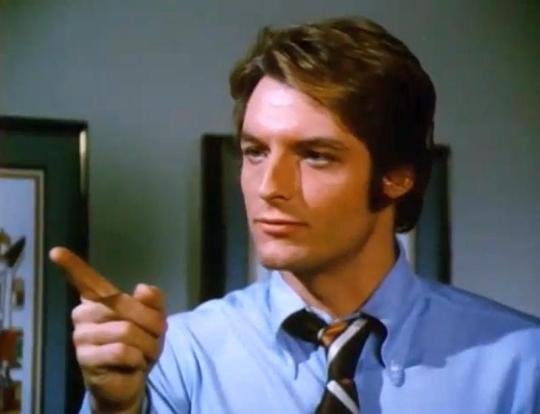
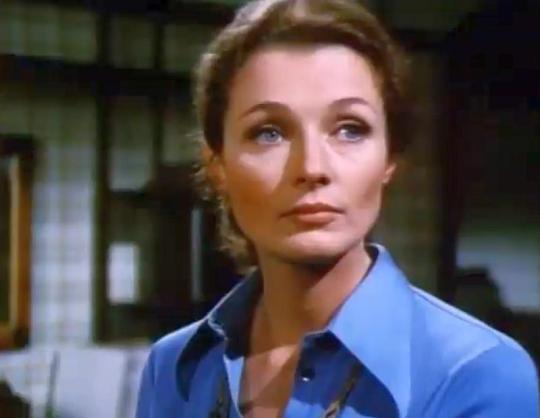

Tonight then from the series Cannon - Blood Money (S03E20) from 1974.
Cast:
William Conrad as Frank Cannon
Peter Haskell as Tom Brannon
Perry King as Dr. Stephen Danver
Russell Johnson as DA John Romano
Diana Muldaur as Ava Brannigan
John Milford as Leroy Vincent
Kathleen Miller as Julie Danver
William (Bill) Joyce as E.T. Brannigan
and many more
Story:
A young doctor arrives at a prison to examine a prisoner. During the examination the prisoner reaches into the doctor's bag and removes a pistol. Cannon is hired to prove the doctor was an unwitting participant in the attempted jailbreak. (from IMDB again)
Speaking of tv baddies, such as the legendary Jack Cassidy, Peter Haskall had his fair share of nasty moments. Here he's the best of worst playing a cad (in a three piece suit) who is after a fortune in missing money that turns out to be sequestered coins. The plot is quite similar to a MANNIX story as there are a lot of twists and turns and a good shootout as Cannon goes up against a sniper (wearing thick glasses!) on a hill. The beautiful Diana Muldaur, who appeared in just about every crime show on tv, is on Cannon's side, caught in between the mystery and honorable mention to Russell Johnson (also in a three piece suit), best known as the professor on GILLIGAN'S ISLAND. Johnson was actually an accomplished dramatic actor and had some good roles come his way over the years. The story is in two parts, as it all begins with an attempted prison escape and the gun in question hidden in a doctor's bag. This may have been taken from real life headlines, too. A very good script, which returns to the day when writers may have been more creative, or at least conjured up some diabolical bad guys. Watching slimy Haskell get his due, without giving too much away, is fun stuff. SEASON 3 CBS dvd box set. - by tcchelsey on IMDB
A guy in prison is shot while trying to make a ridiculously impossible escape. It seems he got a gun out of a doctor's bag and tried to shoot his way out! Now the doctor is in trouble because he's accused of trying to facilitate the escape and Cannon's job is to determine if he was involved or not. The case later evolves a bit and becomes a search for missing money which, it turns out, is hidden in valuable coins.
This is a modestly interesting episode of "Cannon" and in some ways reminded me of "The Fugitive". After all, the guy trying to escape might be innocent AND William Conrad (Cannon) was the narrator for this excellent 1960s series. Do yourself a favor and try it...the show is a bit better than "Cannon". - by planktonrules on IMDB
Thoughts: The doctor (King) doesn't seem to notice that he's set up or better framed behind his back, and Brannon (Haskell) uses everyone to his own play, like he can - with money, which he's after in reality. So he and Cannon play a bit cat and mouse and see who's quicker and better but as usual, Cannon wins and even finds the hidden money.
Can be found on Youtube if interested, even in HD quality.
#cannon#TV series#s03e20#blood money#william conrad#peter haskell#perry king#russell johnson#diana muldaur#john milford#kathleen miller#william (bill) joyce#framed for murder#hidden money#private investigator
3 notes
·
View notes
Text


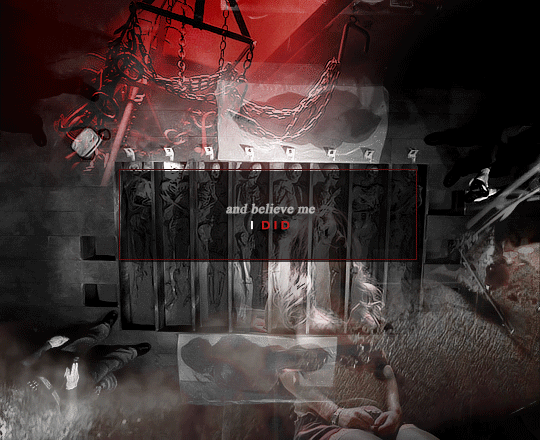
ᴄꜱɪ: ᴄʀɪᴍᴇ ꜱᴄᴇɴᴇ ɪɴᴠᴇꜱᴛɪɢᴀᴛɪᴏɴ | ɴᴀᴛᴇ ʜᴀꜱᴋᴇʟʟ
"Just three days and three nights of heaven on earth... and then, just heaven."
#CSI#Crime Scene Investigation#CSI Las Vegas#Nate Haskell#Bill Irwin#TV#edits#my stuff#cw blood#cw violence
1 note
·
View note
Link
In which I remark on Vicki’s attempt to respond to Carolyn’s wildly indiscreet talk about her crush on her uncle with the same untroubled fealty that loyal family retainers Joe Haskell and Bill Malloy show in their confrontations with Burke.
#Dark Shadows#episode 3#art wallace#diptych#meet vicki#victoria winters#carolyn stoddard#bill malloy#joe haskell#burke devlin
0 notes
Text
SCENE THREE
We switch to the first day of Tim's junior year of high school, which is also at a new Gotham area school (at least new in that Tim's never gone here before). Since it's something of a tradition for every new Robin writer to switch Tim's school and thus change his supporting cast of friends - I'm going to do the same.
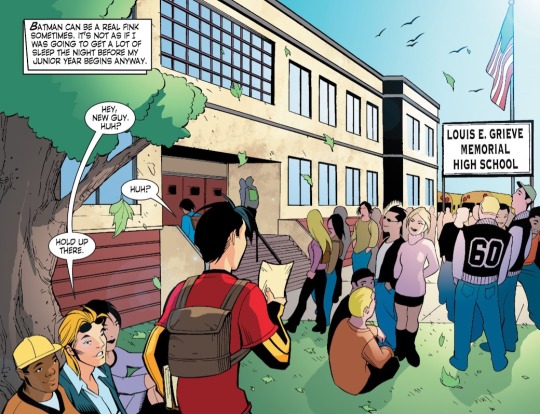
As soon as Tim arrives on campus, Bernard Dowd ("Don't you dare call me Bernie") recognizes him as a new kid and takes him in hand actually Bernard does an impromptu interrogation.

"Well, let's have a look at you, new kid," Bernard says. "It's important right away to determine where you fit in. You don't have any visible face-shrapnel, so you don't belong in the tattoos and piercings set.
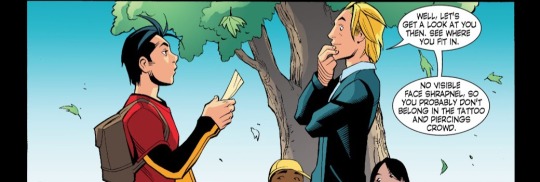
"Your eyes are clear enough that I doubt you're a head. You're packing enough books to tag you as a nerd, but I don't quite buy that. You obviously bathe too often and don't walk with a permanent cringe. And you're in shape enough to be a jock, except that you lack their universal dull, mean and vacuous expression. You're a bit of a puzzle, Tim."

"I might almost suspect you plan to transcend cliques, except that in the entire history of Louis E. Grieve Memorial High School, I'm the only one who's ever been able to pull that off."

Bernard is one of those Eddie Haskell types, massively self-interested, and certain that they're automatically welcome in everyone else's business. In fact, Bernard can mathematically prove that he is the center of the universe. "Positing infinity, any given point is equidistant from every edge of existence. Therefore I am the precise center of the universe," Bernard quips. "Except then that everyone else is too," Tim points out. "Not my concern," Bernard answers. This dialogue probably won't occur in the first issue - because we will want to establish more of his character first, but it's mentioned here to show just what sort of critter Bernard is. Tim is mildly amused by the grilling and can't help but take an instant liking to Bernard - possibly because they are so much unlike each other.
"Stick with me, Drake. I'm the one who knows everyone and everything around here," Bernard says.
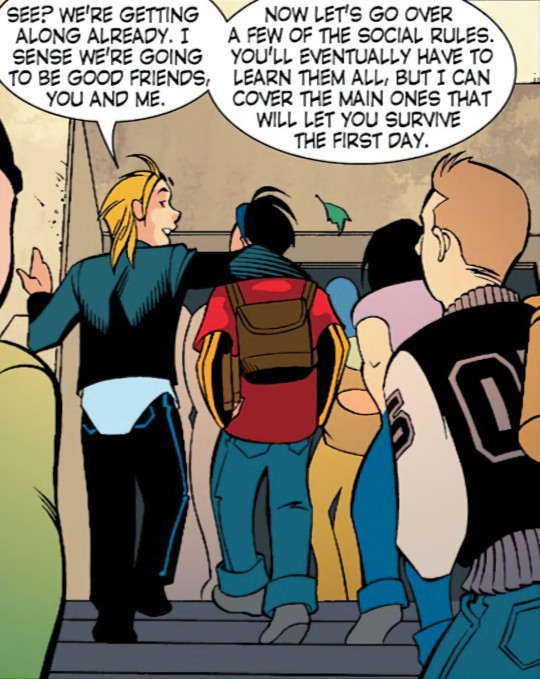
Original plot synopsis excerpts from Robin: Unmasked! (2004) by Bill Willingham
Panels from Robin (1993) #121 by Bill Willingham with art by Rick Mays, Aaron Sowd, and Guy Major
Thank you to @hyacinth-lilac for sharing the Unmasked excerpts with me!
#tim drake#bernard dowd#timbern#timber#robin 1993#HE'S A CRITTER A CREATURETHE CENTER OF THE UNIVERSE#meta#that tag's more for me
146 notes
·
View notes
Text
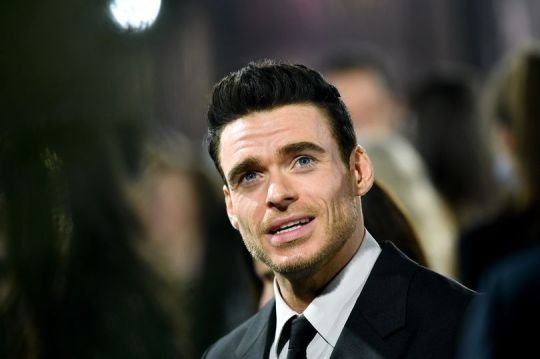


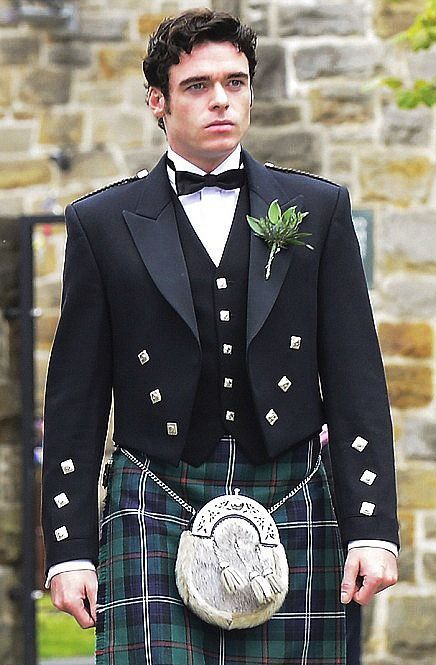
Happy Birthday Scottish actor Richard Madden born June 18th 1986 in Elderslie.
Richard was raised by his mother, Pat, a classroom assistant and his father, Richard, who worked for the fire service. He also has two sisters, Cara and Lauren.
His parents were “hippies”, he says, and their house was pretty open, with friends always piling in for big vegetarian meals. Madden spent a lot of time outside, in the woods behind their house. He has several injuries: he shows me where he shot his dad’s old air pistol and blew off part of his finger, then managed to wreck the same finger when he nailed a wooden plank to his skateboard, then crashed it, so apart from the Hippie parents it was much like most of our own days as bairns.
Despite growing up wanting to be an actor, Richard was very shy during his childhood. To overcome this, at age 11, he joined Paisley Arts Centre’s youth theatre program. In 1999 he was given the lead role as Sebastian Simpkins in BBC1’s children’s TV comedy series Barmy Aunt Boomerang, that’s him aged 12 in the first pic with co-star Toyah Wilcox.. By 2000, he’d made his feature film debut in the Iain Banks adaptation, Complicity.
After high school he was accepted to the Royal Scottish Academy of Music and Drama in Glasgow, Scotland and in 2007, he graduated.
Less than two years later, Richard had a recurring role as Dean McKenzie on the 2009 BBC series Hope Springs. Soon after, he landed the role of Ripley in the 2010 movie Chatroom, a film about a group of teenagers who encourage each other’s bad behaviours after meeting online. In the same year, Richard played punk band Theatre of Hate singer Kirk Brandon in Worried About the Boy, a TV film about the life of British singer-songwriter Boy George.
In 2011 Richard landed his breakthrough role as Robb Stark in the HBO fantasy-drama series Game of Thrones. Also in 2011, he played gay paramedic Ashley Greenwick on the short-lived British comedy-drama Sirens. During hiatus from filming Game of Thrones in 2013, Richard was cast to star as Prince Charming in the 2015 Disney film Cinderella.
Richard won his first Screen Actors Guild award in 2014 for the Discovery Channel mini-series, Klondike. He played Bill Haskell, one of two adventurers who travel to Yukon, Canada during the Klondike Gold Rush in the 1890s. He further enhanced his reputation as a good actor when he appeared in the BBC drama Bodyguard in 2018, the following year he played Lieutenant Joseph Blake in the film 2017 and was Elton John’s manager/lover in the biop of the star Rocketman.
In January 2019 Madden won a prestigious Golden Globe for his role as war veteran David Budd in the BBC show Bodyguard. He also appeared in the 2019 war movie 1917.
We last saw Richard in the movie, Eternals, which was okay, but nothing great, he is one of several actors being touted as the next James Bond,
James is currently in the Amazon Prime series Citadel, I've watched the first three episodes and am not really impressed with it,I think he does pull of the American accent well, but I noticed there have been people saying he doesn't pull it off, Madden revealed he spoke in the accent for two years straight to prepare for the series. The show has been earmarked for a second series. Richard is set to appear in the feature film Killer Heat next.
In July 2019, Madden received an honorary doctorate from his alma mater, the Royal Conservatoire of Scotland. When asked about his personal life during a New York Times interview following speculation about his relationships and sexuality, Madden stated: “I just keep my personal life personal.”
Madden was recently named one of ‘Scotland’s Sexiest Men' following a new study that identifies the most attractive features for men, he has competition though, also in the running are Bathgate’s David Tennant and Glasgow’s James McAvoy,
20 notes
·
View notes
Photo
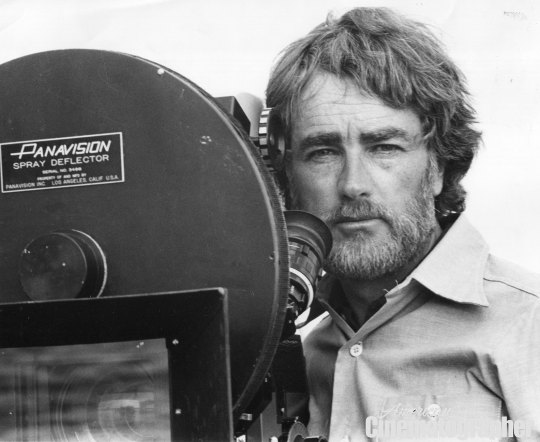
“I hear you’re making a movie about a fish,” the cinematographer Bill Butler said to the young director Steven Spielberg when they bumped into each other on the Universal lot in 1974. Butler, then in his early 50s, had already shot two projects for Spielberg – the TV movie Something Evil (1972) and Savage (1973), a pilot that was not taken up as a series. But it was their collaboration on the “fish movie” that cemented their reputations.
Summer was not previously regarded as an optimum time to release a big studio picture, which is why Jaws (1975), which flooded screens across the US rather than trickling out in stages, is considered the first summer blockbuster – though its finesse and skill, not to mention an intimate second half in which the cast dwindles to three men and a largely unseen shark, give it little in common with the sort of crash-bang-wallop productions that followed in its wake.
It remains one of the finest slow-burning suspense movies outside Hitchcock in his heyday, due in no small part to the cinematography by Butler, who has died aged 101. The production was besieged with difficulties but in 2003 Spielberg called him “the calm before, during and after every storm on the set of Jaws”.
Butler shot about 90% of the ocean scenes with a handheld Panaflex camera for greater flexibility and immediacy. Borrowing a trick he had picked up while shooting second unit on the thriller Deliverance (1972), he also made a transparent box into which the camera was placed to allow for shooting at water level. The effect, he explained, was dramatic and instantaneous. “The big advantage is that psychologically you’re asking: ‘What’s right below the water? Is that shark right there?’” Shots of the thrashing legs of oblivious swimmers “made the audience think: ‘That must look good to a shark. It looks like dinner time.’”
Jaws was one of two best picture Oscar nominees that year in which Butler had a hand, the other being Miloš Forman’s One Flew Over the Cuckoo’s Nest, the eventual winner, based on Ken Kesey’s novel about patients in a psychiatric hospital. Butler was Oscar-nominated for Forman’s film along with Haskell Wexler, who had shot the lion’s share of the footage before being sacked. It was a stormy set, with the actor Jack Nicholson refusing to speak to the director and communicating instead with Wexler and then Butler, who reportedly shot everything from the climactic party scene onwards. A year earlier he had replaced Wexler on Francis Ford Coppola’s brooding surveillance thriller The Conversation (1974).
After Jaws, Butler’s biggest commercial successes were the musical Grease (1978) as well as three consecutive sequels to Sylvester Stallone’s 1976 boxing drama Rocky, beginning with Rocky II (1979). Butler brought a special vitality to the fight scenes in the series, occasionally shooting with as many as eight cameras simultaneously. “As carefully as we planned, there were times when we expected to pan left and something unexpected happened, and we needed to go to the right or zoom instead,” he said. “When an actor slipped, we caught the expression of surprise on his face.”
Some projects even he couldn’t save. Can’t Stop the Music (1980), a vehicle for the disco group the Village People, was a flop that later acquired a cult following. That honour eluded another musical, Graffiti Bridge (1990), starring and directed by Prince. It was shot by Butler, once again serving as an 11th-hour replacement, at the singer’s Paisley Park studios near Minneapolis.
Butler was born in Cripple Creek, Colorado, to Wilmer, a farmer, and Verca, a psychiatric nurse. The family moved to Henry county, Georgia, when he was five, then on to Mount Pleasant, Iowa. He was educated at Mount Pleasant high school and received a degree in engineering from the University of Iowa, where he became fascinated with cameras. He worked for four years as a radio station engineer while also setting up a television station that was later sold to ABC.
Next he got a job at the Chicago-based WGN-TV, where he met the director William Friedkin. Their documentary The People Vs Paul Crump (1962), about an African American man on death row, was screened for Otto Kerner, the governor of Illinois, in rough-cut form the night before Crump was due to be executed. Examining the evidence presented in the film, Kerner changed the sentence to life without parole. “I remember thinking: ‘My God, film has this kind of power?’” said Butler. “That little 16mm film saved someone’s life.”
For Philip Kaufman, Butler shot Fearless Frank (1967), starring Jon Voight as a man who is killed then resurrected as a superhero crime-fighter. He collaborated for the first time with Coppola on the director’s road movie The Rain People (1969), then shot Nicholson’s directorial debut, Drive, He Said (1971).
Among his later credits are the baseball comedy-drama The Bingo Long Travelling All-Stars & Motor Kings, the rape revenge thriller Lipstick (both 1976), Demon Seed, in which Julie Christie is impregnated by a malevolent computer, the conspiracy thriller Capricorn One (both 1977), the horror sequel Damien: Omen II (1978) and two military comedies, Stripes (1981) and Biloxi Blues (1988).
Butler was lauded for his television work: he won an Emmy each for Raid on Entebbe (1976), based on a real-life hostage rescue mission in Uganda, and an adaptation of A Streetcar Named Desire (1984) starring Ann-Margret as Blanche DuBois. He was nominated for another for shooting the steamy mini-series The Thorn Birds (1983).
In 1997 he shot a pair of films that echoed his past glories: the monster movie Anaconda owed more than a little to Jaws, while Don King: Only in America, made for TV, utilised his expertise in rendering ring-craft. For the latter, Butler built a box camera that the actor Danny Johnson, who played the world heavyweight champion Larry Holmes, could physically attack. Johnson “pulverised the lens”, said the director, John Herzfeld. “He literally beat it to shit. You’re completely in a subjective point of view.”
Butler maintained that the 1970s were the “perfect time” for him to make his name. “It was a merging of a lot of film styles that up until then had been very staid, very straightforward. There were certain rules you didn’t break, except I was one of those people that came to break all the rules.”
He is survived by his second wife, Iris (nee Schwimmer), their children, Genevieve and Chelsea, and three daughters, Judy, Patricia and Pam, from his first marriage, to Alma (nee Smith), which ended in divorce in 1983.
🔔 Wilmer Cable Butler, cinematographer, born 7 April 1921; died 5 April 2023
Daily inspiration. Discover more photos at http://justforbooks.tumblr.com
25 notes
·
View notes
Text
Dark Shadows Locations
Surrounding Towns
Coldwater, Maine. Specific to Dark Shadows Universe. Over 50 miles from Collinsport, on Highway 105. That would place it somewhere between Augusta and Camden. (0112)
Highway 105 (between Augusta and Camden) is 50 miles from Collinwood. (0112) Or a hundred, according to other less reliable characters.
Cemeteries
There is a cemetery seven miles to the north of the Stockbridge crypt. (0157)
The Stockbridge cemetery is five miles out on the North Road, when it's leading away from Collinsport. (0182)
Coastline
Bill's body was found two miles south of Collinwood. (0056)
Simm's Cove is two miles north of the cannery. (0060)
Lookout Point is halfway between Bill Malloy's house and the cannery (0060)
There is a "little cove" about two miles north of the Collinwood estate. (0110)
Hills
Widow's Hill
Adjacent to the water.
Large cliffs.
Collinwood on crest.
The Old House is closer to the cliffs than Collinwood is.
Eagle Hill
Eagle Hill Cemetery is on Eagle Hill. It has the same Caretaker as the cemetery with the Stockbridge Crypt, but it isn't the same cemetery.
Roads
Outside Collinsport
There is a main road between Bangor and Collinsport, and it is liable to be washed out. (0096)
There are also at least two less-used back roads (Roger specified "this back road", which implies more than one), which is less prone to being washed out, but still can in bad storms. They must converge soon out of Bangor into one, as Roger isn't able to backtrack, and Patterson uses the phrase "the back road to Bangor". (0096) There are a few houses on it, and an abandoned shack.
The Collins family owned a "seaside" property "just north of town" until Liz sold it to Hackett. (223)
There is a railroad crossing just outside Collinsport. "The beach road outside town" is nearby. (313)
Rose Cottage is on Cumberland Road. (1104)
The Road South of the Oak Crossing
"...they'd never get up that hill, the rain has caused a washout on the road" (0096) implies that there is a single-road bottleneck one needs to pass before they can get to Collinwood. However, since Patterson is able to ask someone to bring "the other car" (so two cars?) up to fetch him from Collinwood, this implies that the road with the washout is not the one he stalled on, or if it is, then either the washout either will be fixed quickly, there is a long-distance detour that works, OR the washout on the road is on the bottleneck, but the bottleneck is between Bangor and Collinsport rather than from Collinsport to Collinwood, or between Bangor and Collinsport. Perhaps the hill is Eagle Hill?
On the road south of the oak crossing, there's a blocked culvert, and the water's going over the road like a river. (0096) The implication here is this road is the same one as the one with the washout.
This is NOT the back road to Bangor.
Inside Collinsport
Joe Haskell lives in a boarding house on Dock Street (654) and the end of North Main Street (178). It's white clapboard.
Lamar Trask's Funeral Parlor was on Front Street. (1199)
Professor Stokes had a place on Arrowhead Street, "one of those small streets on the edge of [Collinsport]".
Collinwood to Collinsport
Patterson's vehicle stalled "half a mile down the road" from Collinwood (0096). Apparently, it was the nearest house with a phone. He later calls it "the Valley Road", and it is "a half mile from Collinwood".
Vicky was almost hit on the road. There is a signpost indicating Collinsport 2 (going away from Collinsport!) (104). Vicky says it was about a half a mile from Collinwood. (104)
The North Road
The North Road leads out of Collinsport, towards Collinwood. It has at least one feeder street that branches off to the right when facing away from Collinsport. At the end of the road is the House By The Sea, which is adjacent to the ocean and surrounded by birch trees. At a point between Collinwood and Collinsport, the road narrows.
The road to the cemetery with the Stockbridge crypt was off the road to the right, from Collinsport to Collinwood. Going on that road, to the left there is another road that leads into the cemetery. (153) The cemetery happens to be five miles out, and is on the North Road, leading out of Collinsport. (182).
The House By The Sea is right by the ocean, and at the end of the North Road. The House By The Sea is surrounded by birch trees. (293)
There is a grave for one Jeremy Harrow at the point where the North Road narrows. It's not the only grave there; further on, there is a tomb with more. (1105)
Collinwood and Estate
The Collinwood Estate property stretches for miles. (0118)
Roger went off the road about halfway down the hill, and that was about a hundred feet from the bottom of the hill. (0017).
There are two roads that reach Collinwood. One is nearly impassable, and probably connects to the Old House. (111)
There are "back roads" that may flood in between Collinwood and elsewhere. (362)
Collinwood is a quarter mile from the road. (574)
Patterson's vehicle stalled "half a mile down the road" from Collinwood (0096). Apparently, it was the nearest house with a phone. He later calls it "the Valley Road", and it is "a half mile from Collinwood".
Vicky was almost hit on the road. There is a signpost indicating Collinsport 2 (going away from Collinsport!) (104). Vicky says it was about a half a mile from Collinwood. (104)
15 notes
·
View notes
Text
once I get my act together and write that meta about how the first 210 episodes (but the first 126, particularly) frame Joe Haskell, Burke Devlin, and Bill Malloy as three versions of the same man with wildly different outcomes pending their relationships (professionally and otherwise) with the Collins family it's ... not going to be over for anyone because no one watches the first 200 episodes of DS. but, importantly, I'm right.
#I'VE CONNECTED THE DOTS.#i have to come unglued once a day about this fifty year old soap opera. first of all the first 200 episodes are genuinely good if very slow#secondly. the Shadows on the Wall thumbnail sketches of them live rentfree in my head.#third. joe is to carolyn and burke as burke was to laura and roger as bill was to liz and paul. explicitly. noted by the characters.#nothing's ever new under the sun and nowhere is it truer than collinsport.#anyway.#polkaknox talks#the news from collinsport
3 notes
·
View notes
Text
dark shadows characters as 70's magic kingdom attractions

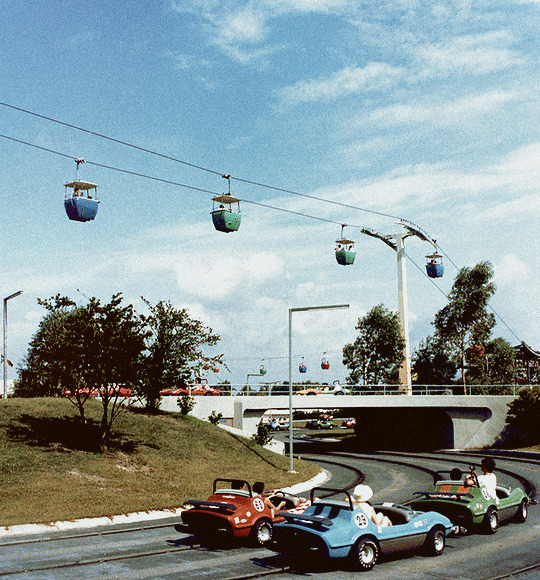
roger collins: grand prix raceway. (October 1, 1971)

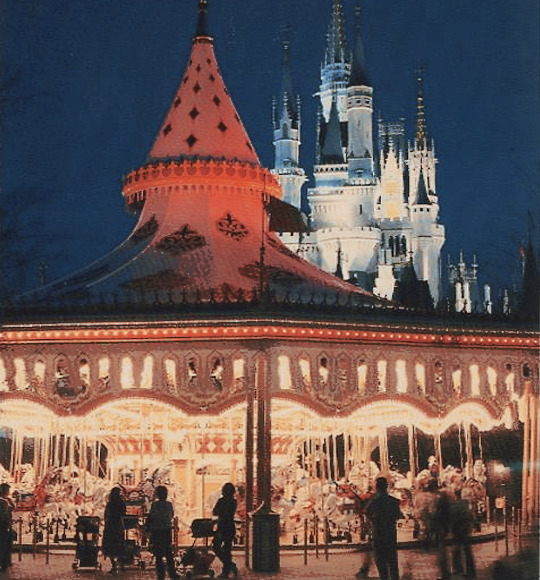
elizabeth collins-stoddard: cinderella's golden carrousel. (October 1, 1971)


burke devlin: pirates of the caribbean. (December 15, 1973)

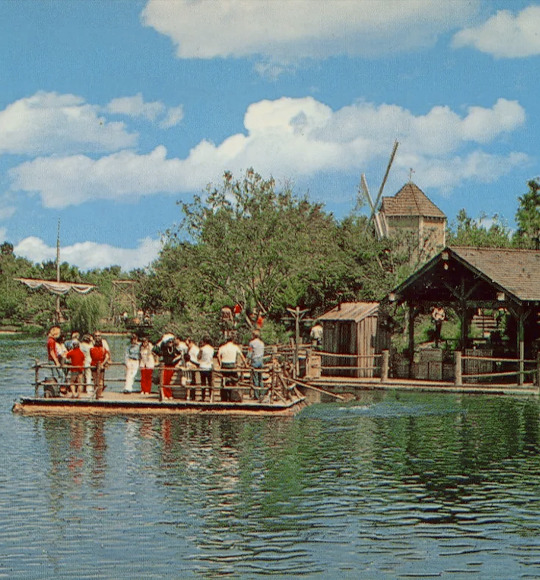
david collins: tom sawyer's island. (May 20, 1973)
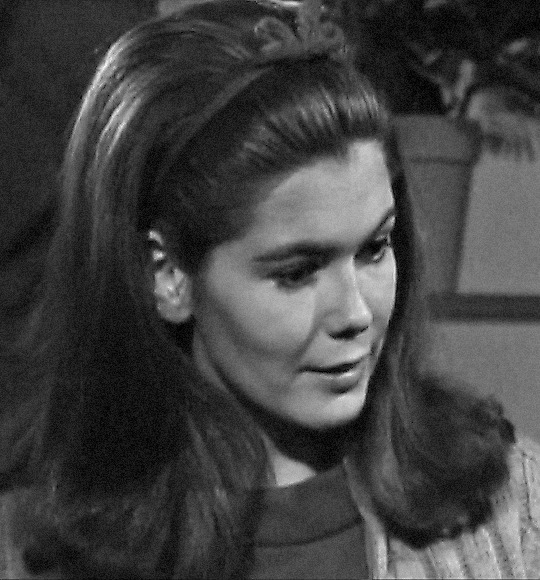

victoria winters: walt disney world railroad. (October 1, 1971)

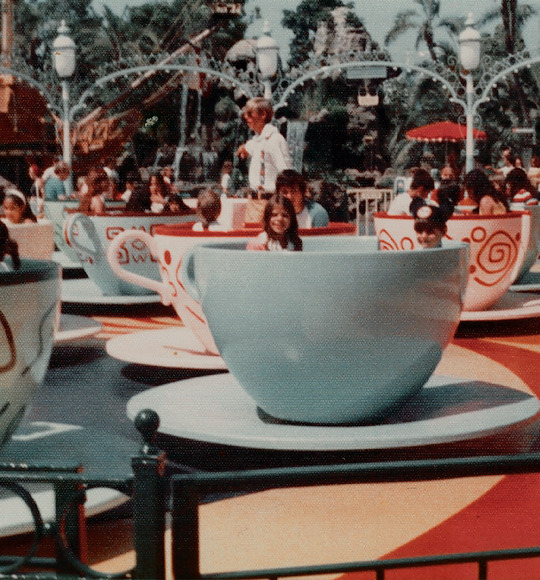
carolyn stoddard: mad tea party. (October 1, 1971)
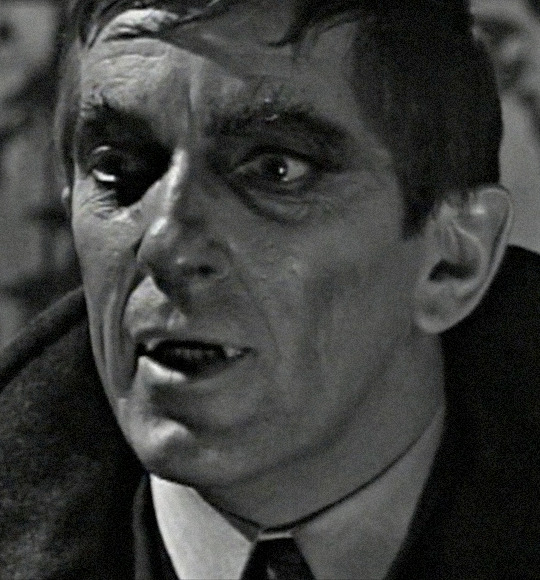
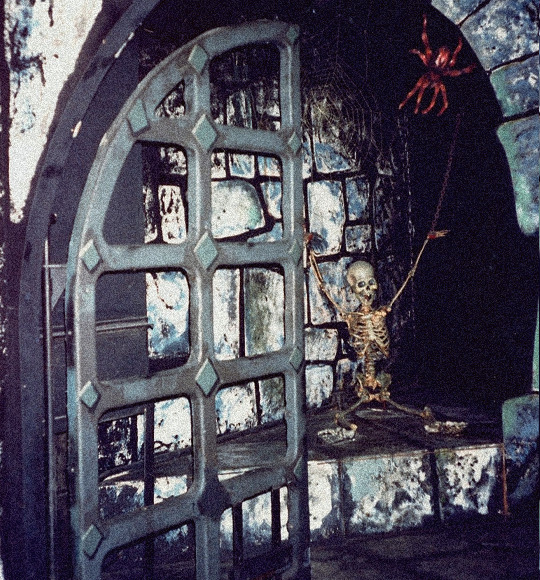
barnabas collins: snow white’s scary adventures. (October 1, 1971)


joe haskell: mike fink keel boats. (October 1, 1971)


bill malloy: 20,000 leagues under the sea. (October 14, 1971)


maggie evans: admiral joe fowler riverboat. (October 2, 1971)

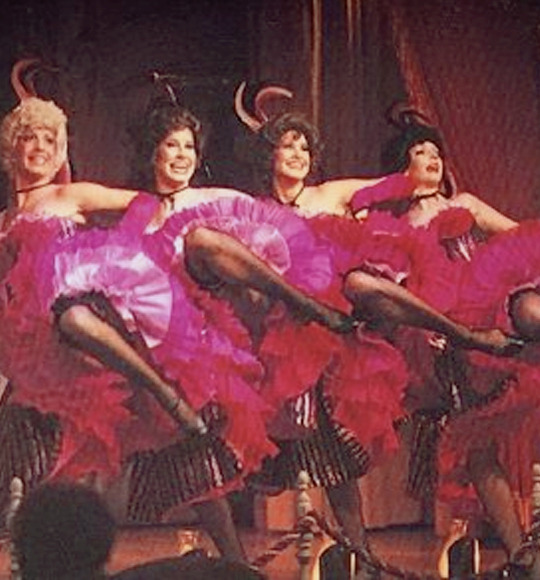
pansy faye: the diamond horseshoe saloon revue. (October 1, 1971)


quentin collins: mr. toad's wild ride. (October 1, 1971)


joshua collins: the hall of presidents. (October 1, 1971)


josette dupres collins: swan boats. (May 20, 1973)


and of course. collinwood: the haunted mansion. (October 1, 1971)
#we are fast approaching content that is for no one.#.... but me :)#to clarify. this is not what i think their favorite ride would be necessarily.#although in some cases there is overlap.#but rather. the attraction that encapsulates their essence.#compilation tag#putting this in that tag but idk what this is.
32 notes
·
View notes
Text
king crimson members and where their gemstones would be if they were gems
Pete: forehead. why is this even. A question
boppin Bobby: probably hand. I just can’t decide which one cause he’s a lefty but plays like a righty
Ian: chest. right over his heart
greg: probably his throat or near his mouth. or his chest. Or hand. Ooooooo, or his BACK, because kc is his past
mike: hand or foot, because, drummer
gordon Haskell: idfk. What do we know about him other than that he thought indoor games was really fucking funny. ummmm maybe his chest?
mel collins: chest but in a blue pearl way not an amethyst way
keith Tippett: hand or chest because jazz musician
i’m going to count Jon Anderson: definitely chest
andy mcculloch: don’t know much about him. Gonna go with hand or foot again
ian Wallace: see above
oops I forgot Peter Giles: head or hand
boz burrell: don’t know much. hand or close to mouth
bill bruford: head or chest
david cross: chest, or cheek because it’s cute
jamie Muir: chest, definitely in an amethyst way this time
john Wetton: hand or chest or near mouth or throat
richard palmer-James: forehead again
adrian belew: ohhh this is a hard one. U,mmm probably top of head? Just seems like him. Or chest, or hand
tony levin: hand or chest
#very niche work of mine#I don’t even think I KNOW anyone else who likes both KC and Steven universe#I better not have forgotten anybody#king crimson#steven universe#gemsona#kind of#flavia writes#I am not doing trey Gunn pat mastelotto etc.#Because I’m only up to toapp#RULY though just listened to thrak#he thinks dinosaur is strange
8 notes
·
View notes
Photo
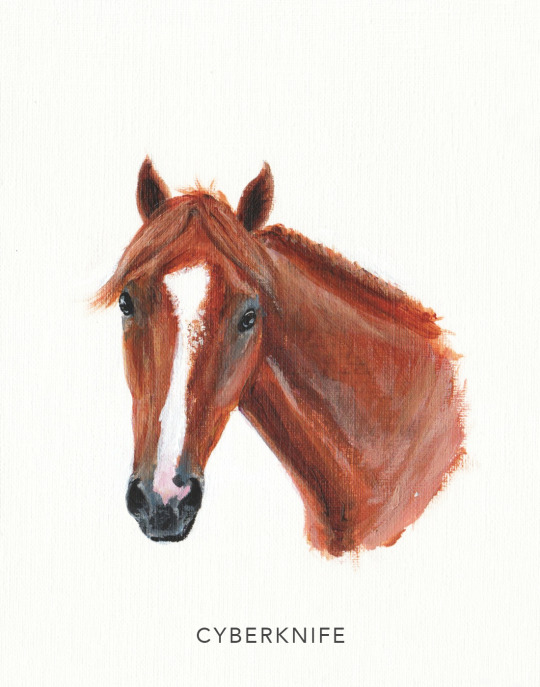
Cyberknife wins the G1 Haskell!
The 2022 Haskell was billed as a 2-horse showdown between the undefeated Jack Christopher and the Santa Anita Derby winner Taiba. When the field hit the stretch, Jack Christopher had the lead and it looked for all the world like Taiba was about to roll past his rival to the win when Cyberknife slipped through the inside, grabbed the lead and held it under the wire.
Cyberknife is putting together a real nice 2nd half of the season - this is his second win after running 18th in the Kentucky Derby and his 2nd G1 for the year after taking the G1 Arkansas Derby.
9 notes
·
View notes
Text
Text from Historical Photos of Women's Stories:
Katharine, the Wright sister.
The Wright brothers, Wilbur and Orville, are justifiably famous for their invention of and first successful flight of the airplane, but their sister, Katharine (1874-1929), was an equally important part of the team.
Katharine was the one who paid the bills, made speeches on her brothers’ behalf (they were very reticent and poor public speakers), promoted her brothers and marketed their invention, led tours, met with business contacts and public officials world-wide, managed the family’s bicycle shop, negotiated contracts, nursed her brothers when they were injured, and basically ran their entire business so Wilbur and Orville could get on with what they did best - designing and building flying machines. Oh, and in addition to organizing her brothers’ lives, Katharine also taught high school Latin and organized suffrage marches in her home town of Dayton, Ohio.
Kathrine was the youngest of the five surviving children of Milton and Susan Wright. When Susan died of tuberculosis in 1889, Katharine, the only girl, took over the running of the household. She left for a few years to attend Oberlin College, and she was the only one of the five siblings to earn a degree. After graduation she returned to the family home in Dayton, and took up a position teaching Latin in a local high school.
As her siblings Wilbur and Orville became more involved in designing, building, and testing flying machines, Katharine took on the organizational aspects of their business. Although the two oldest brothers married and left the home, Katharine, Wilbur, and Orville showed no interest in finding spouses. They seemed bound to remain together and let no one else come between them. Wilbur and Orville never married, and Katharine only married when she was 52 years old. Wilbur had already died, and Orville refused to attend her wedding. He did not speak to her again until she was on her deathbed three years later.
Katharine was a champion for women’s rights, and started attending suffrage meetings in Dayton in 1912. In 1914, she arranged a suffrage parade in downtown Dayton that had over 1,300 marchers including her brothers and her father. She served as President of the Young Women’s League for two years and was also a member of the Dayton Women’s Club and the League of Women Voters. Her husband Henry “Harry” Haskell, whom she married in 1926, shared her opinions about women’s rights. In a letter Katharine wrote to Harry in November 1924, she said “I get all ‘het up’ over living forever in a ‘man’s world... but I know that already having the vote has done a lot toward making men take us seriously.”
When Wilbur and Orville perfected their flying machine, they discovered that the invention was just the first step. Many people didn’t believe it even existed. Witnesses were ignored and photographs were declared to be fakes. The French government, however, took it seriously, and in 1909, the brothers dismantled a plane, boxed it up, shipped it to France, and then put it back together. They held public demonstrations, and the people of France and throughout Europe went wild for the new invention. Katharine came into her own, arranging meetings and giving speeches in English and French. The brothers worked on the plane, and she became the publicist, and met with dignitaries at parties. The crowds loved her, and so did the newspapers. When the Wrights returned to America, they found they were celebrities.
Katharine continued to take over more and more of the day-to-day operations and the promotional aspects of the business upon their return. Wilbur died of typhoid fever in 1912, and their father Milton died in 1917, leaving Orville increasingly dependent upon Katharine.
Katharine stayed involved in Dayton’s women’s groups and was elected to the Oberlin College’s Board of Trustees. She eventually married in 1926, but died only three years later, of pneumonia, in 1929. Orville lived until 1948, and donated $300,000 (worth several million in today’s money) in honor of his sister, to her Alma Mater, Oberlin.

10 notes
·
View notes